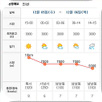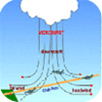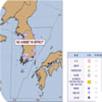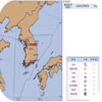Aviation weather forecast is a multi-dimensional and wide-ranging description of weather events predicted at airports, in flight areas, and on flight routes that may affect air navigation. Its purpose is to ensure safe and economical navigation. The following forecast operations are conducted at AMO.
Terminal Aerodrome Forecast (TAF)
Intended for flight planning, describes predictable prevailing weather conditions at a given aerodrome during 30 hours.

Landing forecast
Intended to meet the requirements of local users and aircraft within approximately one hour's flight time from the aerodrome. A concise statement of expected significant changes to the meteorological conditions at a given aerodrome, to be appended to a local routine or local special report or a METAR or SPECI.

Forecast for take-off
As forecast to support the safe take-off of the aircraft considered maximum permissible payload weight, it contains information on expected conditions over the runway complex n regard to surface wind, temperature and pressure.

Low-level area forecast
A brief report to support AIRMET information, issued for operating flights below 10,000 ft (or up to 15,000 ft in mountainous areas or higher, where necessary) using internationally approved codes.

SIGMET information
As a MWO, AMO continuously monitors meteorological conditions for the Incheon Flight Information Region (FIR) and issues SIGMET information when there is an occurrence or expected occurrence of hazardous weather phenomena such as active thunderstorms, tropical cyclones, turbulence and icing which may adversely affect the safety of aircraft operation.

Warnings for aerodrome
AMO provides brief information of hazardous meteorological conditions which could adversely affect aircraft on the ground, including parked aircraft as well as aerodrome facilities and services.

Wind Shear Warning
Issued when wind shear which could adversely affect aircraft on the final approach path, take-off, or during circle approach below 1,600ft (500m) is observed or expected.

SIGMET
Issued when significant weather phenomena such as thunderstorms, typhoons, and icing which may affect the stability of aircraft in flight are observed or expected based on the surveillance of the weather in Korea’s FIR (Flight Information Region).

AIRMET
Issued with abbreviations when major significant weather phenomena (not included in the low-level area forecast) that may affect aircraft operating below 10,000ft are observed or expected.











